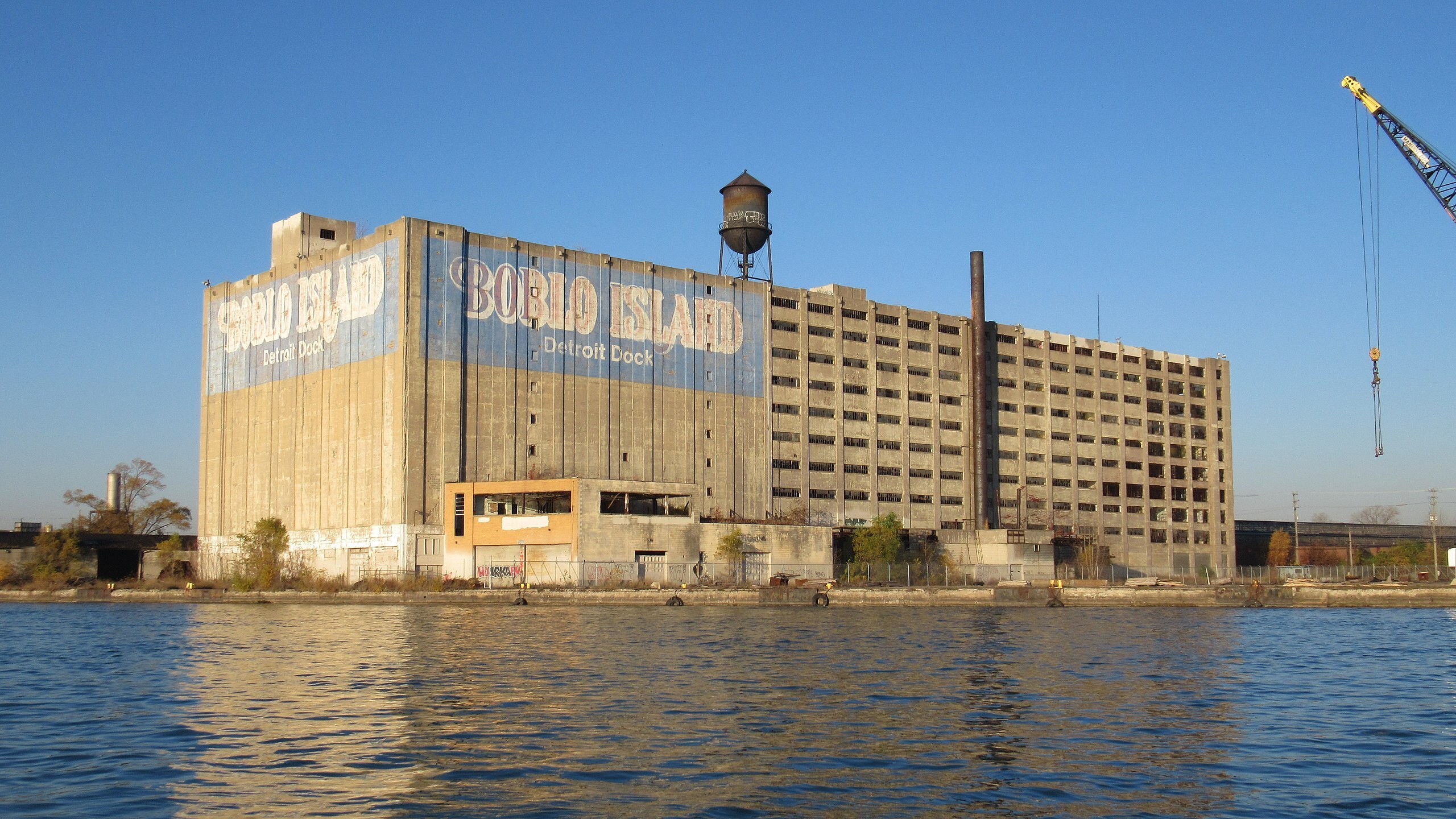
By Laura Gersony, Circle of Blue
The Great Lakes News Collaborative includes Bridge Michigan; Circle of Blue; Great Lakes Now at Detroit Public Television; and Michigan Radio, Michigan’s NPR News Leader; who work together to bring audiences news and information about the impact of climate change, pollution, and aging infrastructure on the Great Lakes and drinking water. This independent journalism is supported by the Charles Stewart Mott Foundation. Find all the work HERE.
Six inches of rain battered the Detroit metro area last weekend, a deluge that overwhelmed the region’s drainage system. Hundreds of basements flooded, cars floated on freeways, and the usually-packed Interstate 94 looked more like a river than a roadway. While the worst of that storm system is likely over, the city is still bracing for more rain later this week.
The Detroit cloudburst was the result of a nasty weather combination—a cold front sweeping across the Midwest, plus a mass of humidity hanging over the city—which promises to be all the more powerful as the climate continues to warm.
It’s hard to pin individual storms on climate change, but the science is clear that atmospheric warming leads to more events like last weekend’s rainfall. Warmer global temperatures cause more water to evaporate from Earth’s surface and oceans, meaning that there is more fuel for storms.
Not only is there more available moisture. Warmer air is also better equipped to deploy it. Kenneth Kunkel, an affiliate climatologist at the National Oceanic and Atmospheric Administration, said that for every 1 degree Celsius that the atmosphere warms, the amount of moisture that it can hold—and then potentially release as rainfall—increases by roughly 7%.
This may be a trivial sum for small temperature changes, but with climate projections forecasting a few degrees of atmospheric warming, it starts to add up. “You add that amount of moisture, now you’re talking a large amount of additional rainfall,” Kunkel said.
As a result, extreme rain events are becoming heavier and more frequent in wetter areas like Detroit. Between 1958 and 2012, the heaviest 1% of storms in the Midwest became 37% more powerful. Similarly, the annual number of extreme storms in southern Michigan doubled between 1964 and 2013.
This has serious effects for stormwater infrastructure, as drainage systems are developed based on precise risk assessments. City leaders build systems that can handle a certain range of rainfall, accepting the risk that extreme events might occasionally exceed that threshold. But because of climate change, the risk assessments that were used to build these structures might not hold for much longer.
“What we now consider a 100-year storm will occur more frequently. It essentially won’t be a 100-year storm anymore: it’ll be a 50-year storm, or a 25-year storm,” Kunkel said.
Check out Great Lakes Now Program Director Sandra Svoboda’s firsthand account of the Detroit flooding impacts in this thread:
When your job is covering water infrastructure for @GreatLakesNow at @detroitpublictv, your husband mops the basement while you document the neighborhood. Here’s what we experienced when pumps failed overnight during heavy rain and what #GrossePointePark looks like this morning: pic.twitter.com/mXpgJwkBqa
— Sandra Svoboda (@DetSandra) June 26, 2021
Detroit officials attributed some of the damage to power outages in the city’s pumping system, which ordinarily redirects standing water from the freeway into surrounding rivers. But even after the system regained power, they had nowhere to put the new water. “We cannot pump it anywhere because it just comes right back into the freeway,” said Diane Cross, a spokesperson for Michigan’s Department of Transportation, on Sunday. In other words, the drainage system was working as it was designed to; it just isn’t equipped to handle that much rain.
The storm comes at the tail end of Detroit’s five-year, $500 million program to upgrade the city’s water and sewer system. Most of these funds were dedicated to replacing or lining the city’s existing underground pipes. The city has also set aside $50 million this decade for green infrastructure projects, which seek to restore the natural environment’s ability to absorb rainfall.
In a press conference held yesterday on the flooded I-94 freeway, Michigan Gov. Gretchen Whitmer urged federal and state lawmakers to fund resilient infrastructure in the state and to take action to combat climate change.
Catch more news on Great Lakes Now:
In Chicago, Flooding Overwhelmingly Strikes Communities of Color
Green Infrastructure: Cities around the Great Lakes plan for a changing future
Michigan’s climate-ready future: wetland parks, less cement, roomy shores
API key not valid. Please pass a valid API key.Featured image: Warmer global temperatures cause more water to evaporate from Earth’s surface and oceans, meaning that there is more fuel for storms. (Photo Credit: Notorious4life, Wiki commons)
1 Comment
-
Michigan had record floods in 1904, 1908, 1947, 1960, 1975 and 1986. In 1986 over 13 inches of rain fell in two days in certain areas. The rain in Detroit is not “unprecedented” and trying to tie this to CO2 is disingenuous at best. I keep writing, but never get a response. We would all be better served by focusing on the truly important Great Lakes issues such as water diversion, invasive species, shipping controls and REAL water pollution from industry and runoff.




